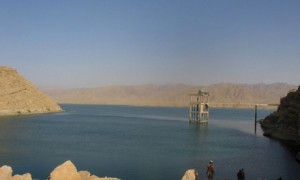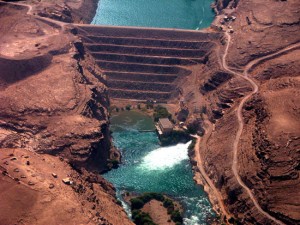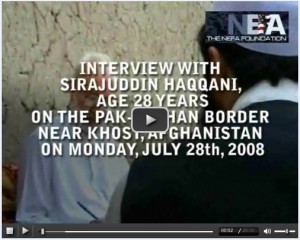Kidnapping: The Taliban’s New Source of Income
BY Herschel SmithRegular readers of The Captain’s Journal know that we oppose the admixture of the war on terror with the war on drugs. Destruction of cash crops doesn’t exactly comport with the notion of winning the cooperation of the population, and for this reason the most experienced and savvy warriors on earth – the U.S. Marine Corps – refused to engage in it when the 24th MEU was active in the Garmser area of operations (The Marines don’t want to antagonize the local population by joining U.S.-backed efforts to destroy the crop. “We’re not coming to eradicate poppy” … “We’re coming to clear the Taliban”).
The problem, we have always asserted, is the Taliban. Targeting them and their domiciles is the tactic of choice. We have also previously pointed out that poppy is neither really the problem nor the only Taliban target. In Financing the Taliban we pointed out that the Taliban had imposed fixed taxes on traders and businesses, and that this taxation doesn’t stop at the local level. It extends to large industrial operations.
ZIARAT, Pakistan — The Taliban’s takeover in April of the Ziarat marble quarry, a coveted national asset, is one of the boldest examples of how they have made Pakistan’s tribal areas far more than a base for training camps or a launchpad for sending fighters into Afghanistan.
A rare, unescorted visit to the region this month revealed how the Taliban are grabbing territory, using the income they exact to strengthen their hold and turn themselves into a self-sustaining fighting force. The quarry alone has brought tens of thousands of dollars, said Zaman, a tribal leader.
The seizure of the quarry is a measure of how, as the Pakistani military has pulled back under a series of peace deals, the Pakistani Taliban have extended their reach through more of the rugged 600-mile-long territory in northern Pakistan known as the Federally Administered Tribal Areas, or FATA.
The quarry here in the Mohmand tribal district, strategically situated between Peshawar and the Afghan border, is a new effort by the Taliban to harness the region’s abundant natural resources of coal, gold, copper and chromate.
So in addition to destruction of the farmers’ income through poppy eradication, would the State Department also have us blow the marble quarry to dust and prohibit small family businesses because they are a potential source of income for the Taliban?
A new source of income has now come to light, and it is even more insidious and personal than the sources noted above. Kidnapping.
Taliban, known to trade in poppy to finance their militant activities in Afghanistan and elsewhere, have now found another lucrative source of income – kidnapping.
Such crimes used to be rare and the perpetrators were usually common thugs who stuck close to Kabul. But Newsweek says that has changed in the last couple of years, as the Taliban learned the profitability of abducting foreigners and Afghan businessmen rather than killing them.
Since then, kidnapping has become one of the guerrillas’ main revenue sources, second only to facilitating and protecting the country’s USD 4 billion-a-year narcotics trade.
If only reported ransoms paid are added in some of the highest-profile kidnappings of the past two years, the total comes to more than USD 10 million a year, the news magazine says, cautioning that’s a “deceptively conservative” estimate.
Most abductions and payments are never publicised. The windfall, says the magazine, has helped the Taliban to come back strong from near defeat and the threat of kidnapping has made travel all but impossible in much of the country, crippling reconstruction efforts.
The report says that hostage negotiations routinely start with the insurgents demanding a prisoner release as Taliban commanders seem embarrassed to talk about ransoms. But the talks always come down to money.
Among other things, cash can bribe underpaid prison guards or finance a breakout, like the one in Kandahar this June where at least 350 captured Taliban escaped.
“Nobody no government wants to acknowledge ransoms, but you got to do what you got to do,” says Jack Cloonan, president of the US crisis-management firm Clayton Consultants.
“The truth is, everyone talks to [kidnappers], either directly or through back channels. And everyone pays ransom,” he said.
Foreigners pay best, Newsweek says, but still, most victims are Afghans.
No one knows how many Afghans have been kidnapped by the Taliban, Newsweek says, stressing that until recently the field was a wide-open scramble among local guerrilla bands who kept most of the proceeds for themselves.
This May the organisation’s no two leader, Mullah Bradar, finally issued a set of rules for all Taliban Commanders who are now required to notify to the supreme military council, the shura, whenever a kidnapping takes place; no one but representatives designated by Mullah Bradar may negotiate terms for a hostage’s release or take ransom payments, and at least two thirds of any cash deal must go to the central shura.
A well organized market indeed, this has become. Since we cannot outlaw the existence of people (who would enforce the law?) in order to prevent this from being a source of income, it is most expedient and wise to recognize the problem for what it is. Just as protection of the infrastructure is most effective when its enemies are targeted, so too is stopping sources of income to the Taliban most effective when there is no more Taliban.







